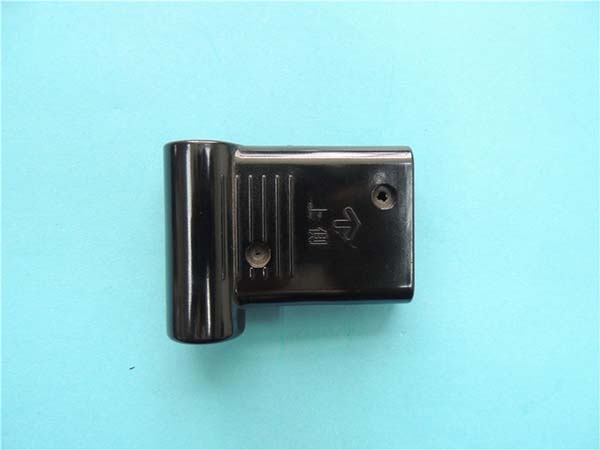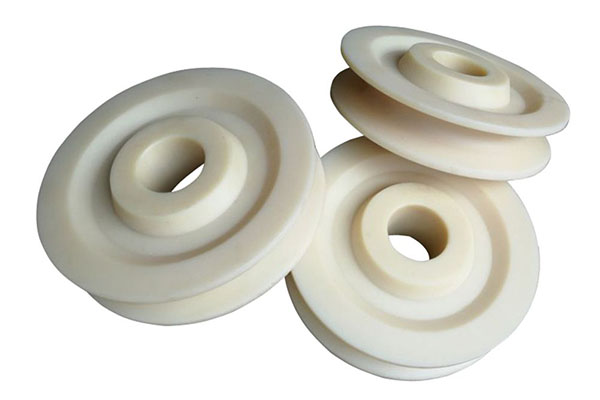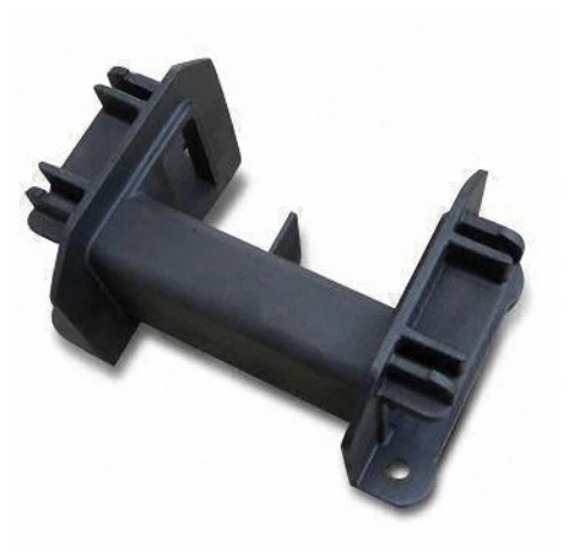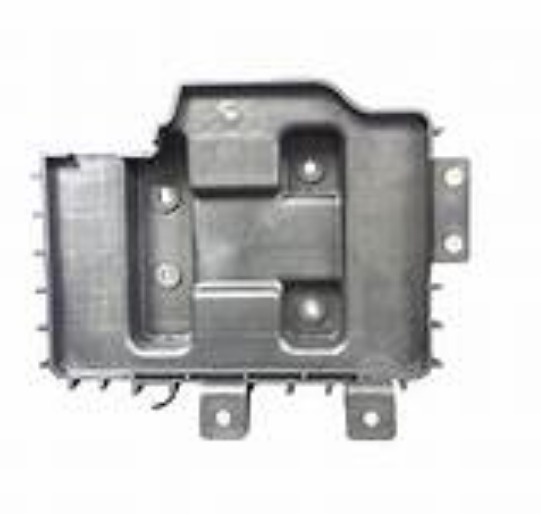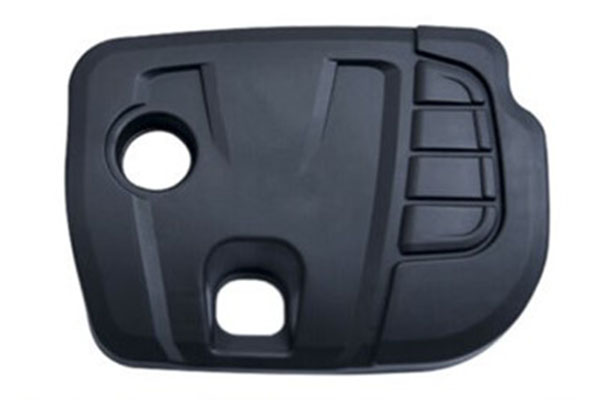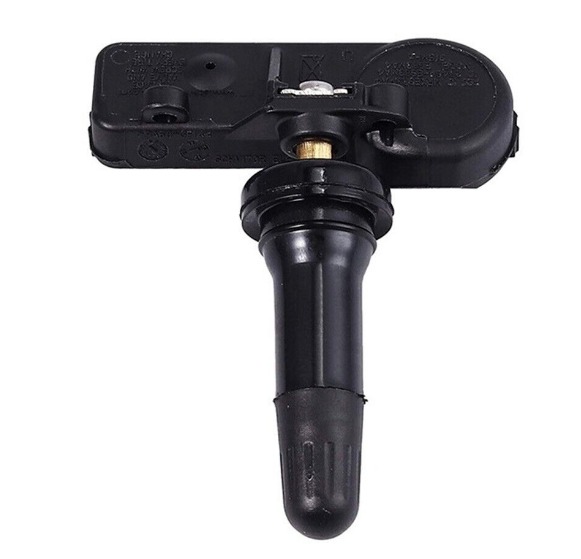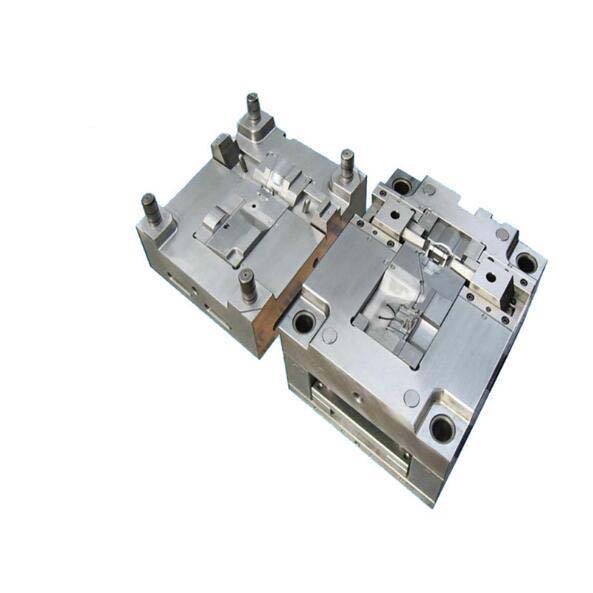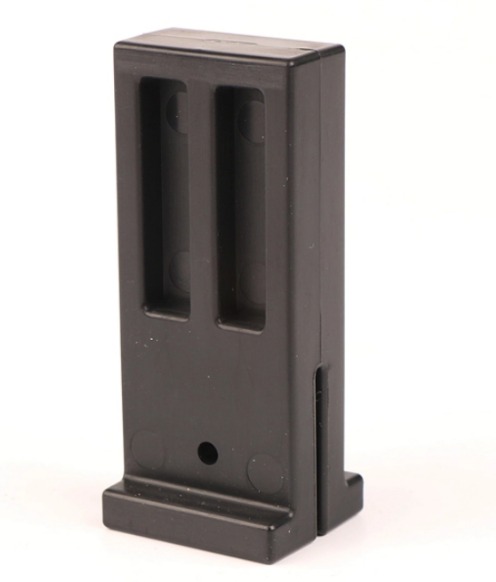What is Injection Moulding Process?
The injection moulding process is a widely used manufacturing method for producing plastic parts. It involves several key steps that transform raw plastic materials into finished products with high precision and efficiency.
First, the plastic material, which usually comes in pellet form, is fed into a heated barrel. Inside the barrel, the plastic pellets are melted by a combination of heat and the mechanical action of a rotating screw. The temperature inside the barrel is carefully controlled to ensure that the plastic reaches the optimal melting point, which varies depending on the type of plastic being used. For example, common plastics like polyethylene (PE) have a melting point in the range of 110 - 130°C, while polypropylene (PP) melts at around 160 - 170°C.
Once the plastic is fully melted, it is in a highly viscous and fluid - like state. The next step is injection. The melted plastic is forced, or injected, under high pressure into a closed mould cavity through a nozzle. The mould is typically made of steel or aluminum and is designed to have the exact shape of the desired final product. The injection pressure can range from 50 to 200 megapascals (MPa), depending on factors such as the complexity of the mould, the size of the part, and the flow characteristics of the plastic. High - pressure injection ensures that the molten plastic fills every detail of the mould cavity quickly and completely.
After the mould cavity is filled with the molten plastic, the plastic is held under pressure for a short period. This is called the holding pressure stage. During this stage, any shrinkage that might occur as the plastic cools is compensated for by adding more molten plastic. The holding pressure helps to ensure that the final product has the correct dimensions and a smooth surface finish.
Subsequently, the plastic begins to cool and harden. Cooling is a crucial part of the process as it determines the final properties of the plastic part. The mould is usually equipped with a cooling system, which can be water - cooled channels or air - cooling mechanisms. The cooling time varies based on the thickness of the plastic part, the type of plastic, and the cooling efficiency of the system. Thicker parts require longer cooling times. For instance, a thin - walled plastic cup might cool in a few seconds, while a thick - walled automotive component could take several minutes to cool sufficiently.
Once the plastic has cooled and solidified to the point where it can maintain its shape, the mould is opened, and the finished part is ejected. Ejection is typically accomplished using ejector pins, which push the part out of the mould cavity. The part may then undergo post - processing operations such as trimming to remove any excess plastic (flash), polishing for a better surface finish, or assembly with other parts.
In summary, the injection moulding process is a complex and highly controlled manufacturing technique that combines heat, pressure, and precise mould design to produce a wide variety of plastic products, from small electronic components to large automotive parts.
The Key Steps in the Injection Moulding Process
Step 1: Material Preparation
Before the injection moulding process begins, meticulous material preparation is crucial. Plastic raw materials, usually in pellet form, often need to be dried. Many plastics are hygroscopic, meaning they absorb moisture from the air. For example, nylon can absorb a significant amount of water. If not dried properly, the moisture in the plastic will turn into steam during the heating process in the injection moulding machine. This can lead to defects such as voids, blisters, or a poor surface finish in the final product. Generally, plastics are dried in specialized dryers at specific temperatures and for a certain duration. For polycarbonate, it is typically dried at around 120 - 130°C for 3 - 4 hours.
Color matching is another important aspect of material preparation. If a colored plastic product is desired, colorants, which can be in the form of masterbatches or pigments, are added to the base plastic pellets. Precise color matching is essential to meet the design requirements. A slight deviation in color can be a significant issue, especially for products with strict brand - color standards. For instance, a toy manufacturer might require the plastic parts of a toy to match a specific Pantone color code exactly.
Step 2: Mould Installation
The correct installation of the mould onto the injection moulding machine is fundamental to the success of the entire process. First, the mould must be carefully lifted and positioned onto the machine's platen. This requires the use of appropriate lifting equipment, such as cranes or hoists, to ensure safe handling. The mould is then aligned with the machine's mounting holes and secured using bolts or clamping mechanisms.
After the mould is physically attached, it needs to be properly adjusted. The moving parts of the mould, such as slides and ejector pins, must be checked to ensure they move smoothly. The alignment of the two halves of the mould (the fixed and the moving halves) is also critical. A misaligned mould can cause issues like flash (excess plastic around the edges of the product), uneven wall thickness, or incomplete filling of the mould cavity. Additionally, the mould's cooling channels, if any, need to be connected to the machine's cooling system. Leak - testing of these connections is essential to prevent water leakage, which could damage the mould or the injection moulding machine.
Step 3: Plasticization
Plasticization is the process of melting the plastic pellets in the injection moulding machine's barrel. The barrel is equipped with heating elements that gradually raise the temperature of the plastic. As the temperature increases, the plastic transitions from a solid pellet state to a viscous, semi - liquid state. A rotating screw inside the barrel plays a crucial role in this process. The screw not only transports the plastic along the length of the barrel but also mixes and shears it.
Shearing the plastic generates additional heat due to friction, which aids in the melting process. The speed of the screw rotation, known as the screw RPM (revolutions per minute), affects the plasticization rate. A higher screw RPM can increase the plasticization speed but may also lead to over - shearing, which can degrade the plastic's properties. For example, if the screw RPM is too high for a heat - sensitive plastic like PVC, it can cause the plastic to decompose or discolor. The optimal plasticization conditions vary depending on the type of plastic. For example, acrylonitrile butadiene styrene (ABS) typically requires a barrel temperature in the range of 200 - 250°C for proper plasticization.
Step 4: Injection
Once the plastic is fully plasticized, it is ready to be injected into the mould cavity. The injection process is driven by high pressure. The plastic melt is forced through a nozzle and into the runner system of the mould, which then distributes the plastic evenly into the cavity. The injection speed is a critical parameter. A fast injection speed can ensure that the plastic fills the cavity quickly, reducing the risk of premature solidification. However, if the speed is too high, it can cause issues such as air entrapment, which can result in voids or burn marks in the product.
The injection pressure also plays a significant role. Insufficient pressure may lead to incomplete filling of the mould cavity, resulting in a defective product. On the other hand, excessive pressure can cause the mould to deform or damage, and it can also lead to high residual stresses in the product, which may cause warping or cracking during or after cooling. For a small, simple plastic part, an injection pressure of around 50 - 80 MPa might be sufficient, while a large, complex automotive component could require pressures upwards of 150 MPa.
Step 5: Cooling and Solidification
After the mould cavity is filled with the molten plastic, the cooling and solidification stage begins. Cooling is essential for the plastic to harden and take the shape of the mould cavity. The cooling system in the mould, which often consists of water - cooled channels, removes heat from the plastic. The cooling time is a balance between production efficiency and product quality.
If the cooling time is too short, the plastic may not have fully solidified, and the part may deform when ejected from the mould. Thicker - walled parts generally require longer cooling times. For example, a plastic part with a wall thickness of 5 mm may need a cooling time of 30 - 60 seconds, while a part with a wall thickness of 1 mm could cool in just 5 - 10 seconds. The type of plastic also affects the cooling time. Crystalline plastics, such as polyethylene, typically have a longer cooling time compared to amorphous plastics like polystyrene because of the additional heat release during the crystallization process.
Step 6: Ejection
Once the plastic part has cooled and solidified enough to maintain its shape, it is time to eject it from the mould. Ejection is usually accomplished using ejector pins, which are small rods located in the moving half of the mould. When the mould opens, hydraulic or mechanical force is applied to the ejector pins, causing them to push the part out of the mould cavity.
It is important to ensure that the ejector pins are properly designed and positioned. If the ejector pins are too small or not evenly distributed, they may cause the part to warp or break during ejection. Additionally, the ejection force should be carefully controlled. Too little force may not be enough to eject the part, while too much force can damage the part or the mould. Some moulds may also use other ejection mechanisms, such as air ejection, where compressed air is used to blow the part out of the mould, especially for parts with complex shapes or those that are difficult to eject with pins.
Comparison with Other Moulding Processes
When considering manufacturing methods, it's essential to understand how injection moulding stacks up against other moulding processes. Here, we'll compare injection moulding with compression moulding and die - casting.
Injection Moulding vs Compression Moulding
| Comparison Aspect | Injection Moulding | Compression Moulding |
| Moulding Process | Melts plastic pellets and injects them into a mould cavity under high pressure. | Places pre - measured amounts of raw material (usually in a semi - solid or pre - formed state for thermosets) into a heated mould. The mould is then closed, and pressure is applied to shape and cure the material. |
| Cycle Time | Generally shorter. High - speed injection allows for quick filling of the mould cavity. Cycle times can range from a few seconds for small, simple parts to a couple of minutes for larger, more complex ones. | Longer compared to injection moulding. The curing process in compression moulding, especially for thermosetting materials, can take several minutes. For example, a large thermoset part might have a cycle time of 5 - 10 minutes. |
| Product Precision | High precision is achievable. Modern injection moulding machines can control injection pressure, temperature, and volume accurately, resulting in parts with tight tolerances, often within ±0.05 - 0.1 mm. | Lower precision in some cases. The process of placing the raw material and the curing mechanism can lead to more variability in part dimensions. Tolerances are typically around ±0.2 - 0.5 mm. |
| Material Compatibility | Suitable for a wide range of thermoplastics and some thermosets. There are thousands of plastic grades available for injection moulding, allowing for various mechanical, chemical, and physical property requirements. | Primarily used for thermosetting materials such as phenolic, epoxy, and urea - formaldehyde resins. It can also be used for some elastomers. |
| Cost | Higher initial investment in equipment and moulds. However, for high - volume production, the per - unit cost can be low due to the short cycle times. | Lower initial investment in equipment, but mould costs can be significant for complex shapes. Labour costs may be higher due to the longer cycle times and more hands - on operation in some cases. |
| Surface Finish | Can achieve a very smooth surface finish, suitable for products that require high - quality aesthetics, like consumer electronics. | The surface finish can be good but may have more visible marks from the moulding process, especially in areas where the material flows together. |
Injection Moulding vs Die - Casting
| Comparison Aspect | Injection Moulding | Die - Casting |
| Moulding Process | Involves melting plastic and injecting it into a mould cavity. | Melts non - ferrous metals (such as zinc, aluminum, magnesium) and injects the molten metal into a steel die under high pressure. |
| Cycle Time | Varies but is often relatively fast for plastic parts. As mentioned before, small parts can be produced in a few seconds. | Can be fast, especially for small parts. High - volume die - casting operations can achieve cycle times of 10 - 30 seconds for small, simple metal parts. |
| Product Precision | Good precision, with tight tolerances for plastic parts. | High precision. Die - cast parts can have very tight tolerances, often within ±0.01 - 0.05 mm, making them suitable for applications where high accuracy is required, like automotive engine components. |
| Material Compatibility | Deals with plastic materials. | Limited to non - ferrous metals and their alloys. |
| Cost | Equipment and mould costs can be high, but per - unit cost is low for high - volume production. | High initial investment in equipment and dies, which are more expensive due to the need to withstand high - temperature molten metals. However, for large - scale production, the per - unit cost can be competitive. |
| Product Characteristics | Plastic parts are generally lightweight and have good chemical resistance. They can be made in a wide range of colors and can be transparent or translucent. | Metal parts are heavier, have high strength, good thermal and electrical conductivity, and are suitable for applications that require these properties, such as heat sinks or electrical connectors. |
In summary, injection moulding offers advantages such as a wide range of material options, high production speed for plastic parts, and good precision. However, it may not be the best choice when high - strength metals are required (as in die - casting) or when working with certain types of thermosets in a more cost - effective way (as in compression moulding).
Yigu Technology's View
As a non - standard plastic metal products custom supplier, Yigu Technology deeply understands the significance of the injection moulding process. We have rich experience in handling various complex moulding requirements. Our team of experts is proficient in every step of the injection moulding process, from material selection to the final product inspection.
When it comes to material preparation, we have strict quality control measures to ensure that the plastic materials are of high quality and properly pre - treated. We work closely with reliable material suppliers to source the best - suited plastics for different product requirements.
In mould installation and maintenance, our technicians are well - trained to handle high - precision moulds. We use advanced equipment to ensure accurate mould installation, and our regular maintenance procedures help to extend the lifespan of the moulds, reducing production interruptions.
During the injection moulding process, we carefully monitor and adjust the process parameters. Our state - of - the - art injection moulding machines are equipped with advanced control systems, allowing us to precisely control variables such as temperature, pressure, and injection speed. This ensures that each product we produce meets the highest quality standards, with consistent dimensions and excellent surface finishes.
We also place great importance on post - processing operations. Our skilled workers are experienced in trimming, polishing, and other post - processing tasks, which can further enhance the quality and appearance of the products. With Yigu Technology, customers can be assured of high - quality non - standard plastic metal products that are produced through a well - controlled and efficient injection moulding process.
